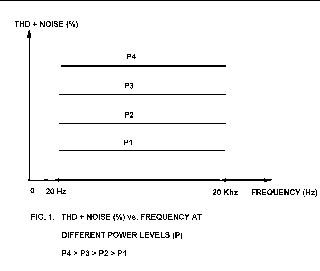According to Vladimir Lamm of LAMM Industries, it is possible to predict the sound quality of a piece of audio equipment from measurements alone, without listening. Alas, it is not a single total harmonic distortion (THD) @1kHz number.
Although the full measurement interpretation framework, based on Lamm's primary research, is proprietary, it is illustrated by the desired THD vs. frequency and power level of an amplifier for a faithful reproduction of the sound.
An ideal amplifier will exhibit constant THD vs. frequency at each power level; THD vs. power would show a gradual but unvarying rise in THD as power increases for each of test frequencies; and harmonic residue would resemble a perfect sine wave, the peaks and valleys rising and falling in equal amounts. (Illustrations and additional discussion are available at LAMM Industries web site and SoundStage! March 1999 review of LAMM ML2 amplifiers).
A first step to correlate measurements and sound quality is to measure THD at the top of audio range, say at 20kHz, and compare it to the THD at 1kHz. If the only instrument you have is a soundcard, it will not allow measurements of sufficient number of harmonics at 20kHz. A good proxy then is a "two-sine" test with, say, 19kHz and 20kHz sinewaves of equal amplitude. The level of the beat at 1kHz, as well as "sidebands" at 18/21kHz, 17/22kHz and so on will indicate the high frequency linearity of the device under test.
